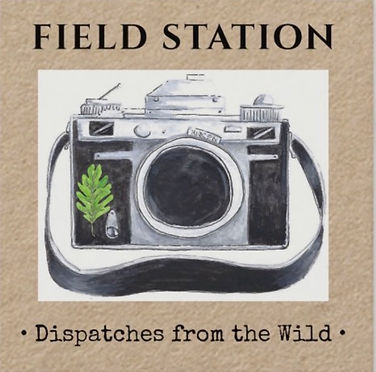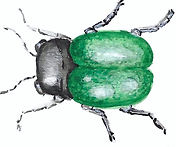




[
"We make the world significant by the courage of our questions."
-Carl Sagan
]
JOURNALING



What is nature journaling?
Nature journaling is the practice of connecting with nature and drawing and writing in response to that experience in a notebook about one's observations and feelings. Nature journals can be more scientific with a field journal that shows diagrams and extensive written documentation on a subject. Or a journal can be more artistic with detailed and colored illustrations and writings that can be expressed more poetically. Or they can be somewhere in between. Nature journaling is a personal practice that can be tailored to suit the particular enjoyment of the individual. One does not need to be a scientist, an artist, or a professional writer.
Why nature journal?
There are many benefits to keeping a nature journal. These are just some of the reasons to start one.
-
Journaling helps you learn more about the flora and fauna that surrounds you. You develop a greater appreciation of the natural world.
-
Journaling deepens your observation skills.
-
Journaling helps you slow down and practice mindfulness, which in turn reduces stress.
-
Journaling sharpens scientific, artistic, and writing skills.
-
Journaling gets one outside in nature and fosters physical exercise.
-
Journaling is an activity that creates shared bonding when doing it with others.
-
Journaling communicates about the natural world to others when shared and can be useful to the scientific community and in the education of others.
How do I start a nature journal?
The best way to start a nature journal is to make it simple. Have a dedicated notebook that you use. You can decide what you want that to look like, but it should be a notebook that has adequate space on its pages for its intended purpose and it should also be easy to carry with you. You can decide if you want the pages to be unlined or thicker for absorbing watercolor paints. You might also choose a wire-bound notebook if you don't want to hold open your notebook as you sketch or write. You may also choose a notebook with waterproof pages if you worry about precipitation harming your drawings.
What materials do I need?
Next, gather up your writing and drawing supplies. You may use pens, pencils, colored pencils, paints, or paint pens that you will use to sketch, paint and write on your page. Some people like to go out in nature and do most of the sketching and writing in the field, but then complete them with more detail at home. Some people complete the whole process in the field. That is your preference. No tools are really needed to get started, but if you desire, you might also bring with you a magnifying glass or ruler if you think you might enjoy using them. Remember that anything you decide to take, you will have to carry with you, along with your water bottle and bug spray and whatever else you might need. Plan accordingly.
Where do I go to nature journal?
The next step is to choose a place to nature journal. Look into visiting local nature parks or areas where you like to take a walk. You can even make observations from your own backyard or through your window if mobility is an issue for you. Some of the best places to journal are in meadows and prairie environments because of the abundance of flowers and insects, but there are also lots of wildlife around ponds and lakes. You can find lots of interesting fungi in forested areas as well. Go where you feel the most comfortable.
How do I get started?
Now that you are in your favorite location and you are prepared with your materials, you may wonder where to start. One of the best ways to begin is to clear your mind and prepare yourself to notice things that you might ordinarily not when you are just out walking. You want to notice the small things- leaf shapes, bark surfaces, small insects and things like that. Prepare to slow down in order to make observations. A quick 1-minute meditation helps to freshen you mind before starting.
First things first- it can be hard to get started and decide what your subject matter will be. One of the best ways to overcome this is to immediately write something on your blank page. Start with the meta data. In a corner of your page, document the date and time, location, approximate temperature, and weather. This helps to break the ice, so to speak. Start your walk. When you come to a place where there seem to be things to observe, you might choose another corner of your page to create an impressionistic sketch of the overall landscape of where you are, like a lake with surrounding trees or a meadow with high grasses and a path. It doesn't need to be too detailed. Just take a few minutes to complete this.
How do I make my drawings?
While you are stopped and creating your impressionistic picture, start to slowly move your eyes to things in your immediate vicinity. Do you see a plant or flower or an insect or something that is interesting to you? Begin your sketch. If you are a beginner, I would suggest starting with something that is not moving, so you will have time to study it and draw it before it scurries away. Sketch your subject matter with general shapes and add detail as you complete more of your picture. If drawing is not your forte, consider making a more loosely sketched picture. If you aspire to learn how to draw what you see at a higher level, consider researching how to draw basic shapes in nature such as that of birds. There are many resources available to help you learn new techniques to improve your drawing skills. I might even document my subject matter with a few quick photos should I like to add more detail later or enter my observation into a site that will help me to identify it. A more advanced idea might include drawing your subject from a few different angles or in various stages of growth. You might find a plant with flowers where some have wilted and others are still in the bud stage. You've identified a process! You might also use a separate drawing on the same page to show a closer view of a certain area of your larger drawing. You can be creative with boxes, circles, arrows, and other icons.
What do I write?
This can include not only direct observations, but also include feelings, questions, or other thoughts you may have about your subject matter. Start with the three prompts that pioneering nature journal expert, John Muir Laws, advises to use: "I notice", "I wonder", "It reminds me of." Things that you notice might be it's size, the number of petals, or the color. "I wonder" might mean asking things like "Why does this plant grow here?" or "Do insects like this flower and why?" Then finally, "it reminds me of" can include using triggers for your senses describing it in terms of common textures or shapes you've seen before that would help another person understand exactly what you mean. An example would be to describe the surface of leaf as reminding you of velvet or to write that a nut looks like the shape of an owl's face. These descriptions add more depth to your observations. Additionally, you can add more writing when you identify what you are looking at. I usually do this after I've come back and do a little more research in field guide books or online. You can add as much or as little information as you like.
Now that you've completed your first journal entry and hopefully you have enjoyed the process, see if others might be interested in doing it with you or seek out a local journaling club that meets regularly that you can join. Share your work with one another. Everyone gets new ideas about how to arrange their page or communicate through descriptions and dialog boxes. You would be amazed at how differently people express themselves through their journals even when observing the same subject. You can learn so much from others. Most importantly, have fun. If you journal in a way that you enjoy and is meaningful to you, you are more likely to do it again.



Nature Journaling Resources
These are just some of the helpful resources that are available if you are needing more information about nature journaling.
Web:
John Muir Laws: Nature Stewardship Through Science, Art, and Education
Books:
The Laws Guide to Nature Drawing and Journaling by John Muir Laws
Keeping a Nature Journal by Clare Walker Leslie
Guide Books:
Peterson's Guides
Sibley Guide to Birds
Audobon Society Guides
Field Notebooks:
Nature Anatomy Notebook by Julia Rothman
A Nature Journal: A Kids Nature Journal by Alice Cantrell
